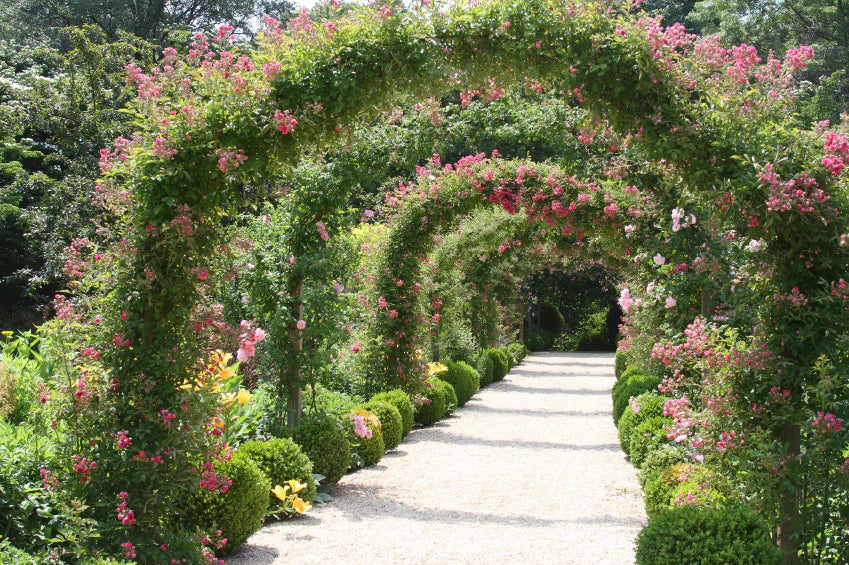Rambler roses – reaching high
Ramblers are the climbing masters among roses. With their meter-long shoots, they grow into sparse, mature trees up to heights of six to seven meters, provide greenery for large pergolas and imposing archways, and overgrow sheds.

The Rambler Rose
These climbing roses, which develop particularly long, soft, and thin shoots, are called ramblers or climbing roses. Unlike modern, repeatedly flowering climbing roses, they usually bloom only once in June, but for weeks on end, producing a sea of small clusters of flowers. Their splendor only fades in July—a uniquely beautiful sight that's well worth the effort.
Modern climbers have a stiffer growth habit than ramblers due to their woody shoots and remain smaller. They are well-suited for rose obelisks, walls, and fences, whereas most ramblers quickly grow out of control at such low heights. With their enormous growth, they require ample climbing space.
They add a particularly picturesque touch to the sparse crowns of mature trees, such as fruit trees, pines, black locusts, or yews. Their long, prickly shoots tangle in the bark and branches, providing sufficient support to climb upwards on their own. This requires that the selected shrub is already mature and therefore stable enough to bear the burden of blossoms. The weight and wind load should not be underestimated. Deep-rooted trees are ideal, as they do not pose too much competition to the shallow-rooted ramblers. Plant them at some distance from the climbing tree. An old ladder, dug deep into the ground at the bottom and tied to the tree trunk at the top, can make an excellent climbing aid.
Finally, rambler varieties such as 'Bobbie James' have also proven themselves as fence or hedge roses. As a clipped, trained hedge, they are a space-saving alternative for cramped locations where there simply isn't enough room for free-growing shrub rose hedges. Ramblers are planted directly against a sturdy chain-link fence, which they quickly conquer, and the shoots are trained as horizontally as possible along the fence mesh. The more horizontally climbing rose shoots are trained, the more flowering side shoots they will produce. After a few years, the green fence can be shaped into a hedge about 50 cm deep and two meters high using hedge trimmers. This creates an unusual rose hedge with impressive June blooms.
Finally, a tip for the right cut:Repeat-blooming climbing roses are pruned annually, but rambler roses, which bloom only once, are not. Ultimately, the gardener's preference for growth determines whether and how the rambler should be pruned. If it grows into a tree, pruning is hardly possible and even unnecessary. However, if a bare wall is to be greened, regular pruning is necessary to ensure the rose's lower part remains compact and green. Then they are pruned "to the cones," meaning the side shoots are removed – ideally after flowering – to three to five buds. This guarantees full bloom the following year and a fairytale garden dream.
TEXT: Uta Göttsche













































































































